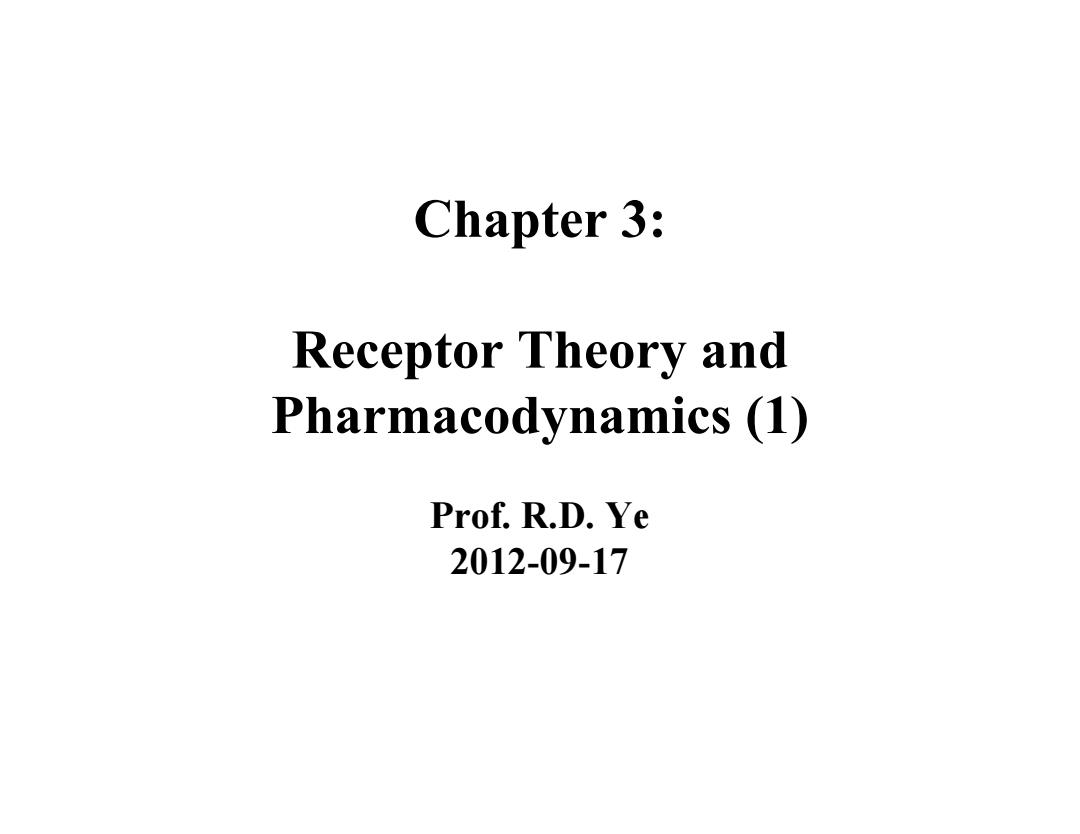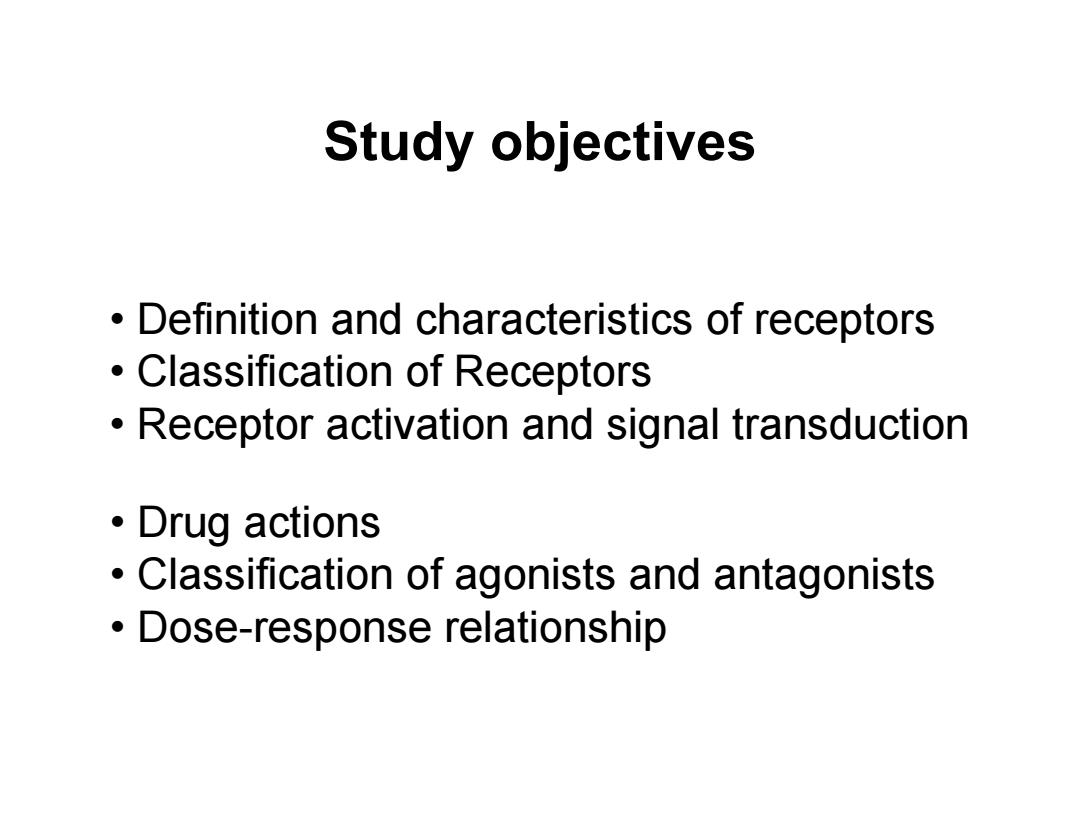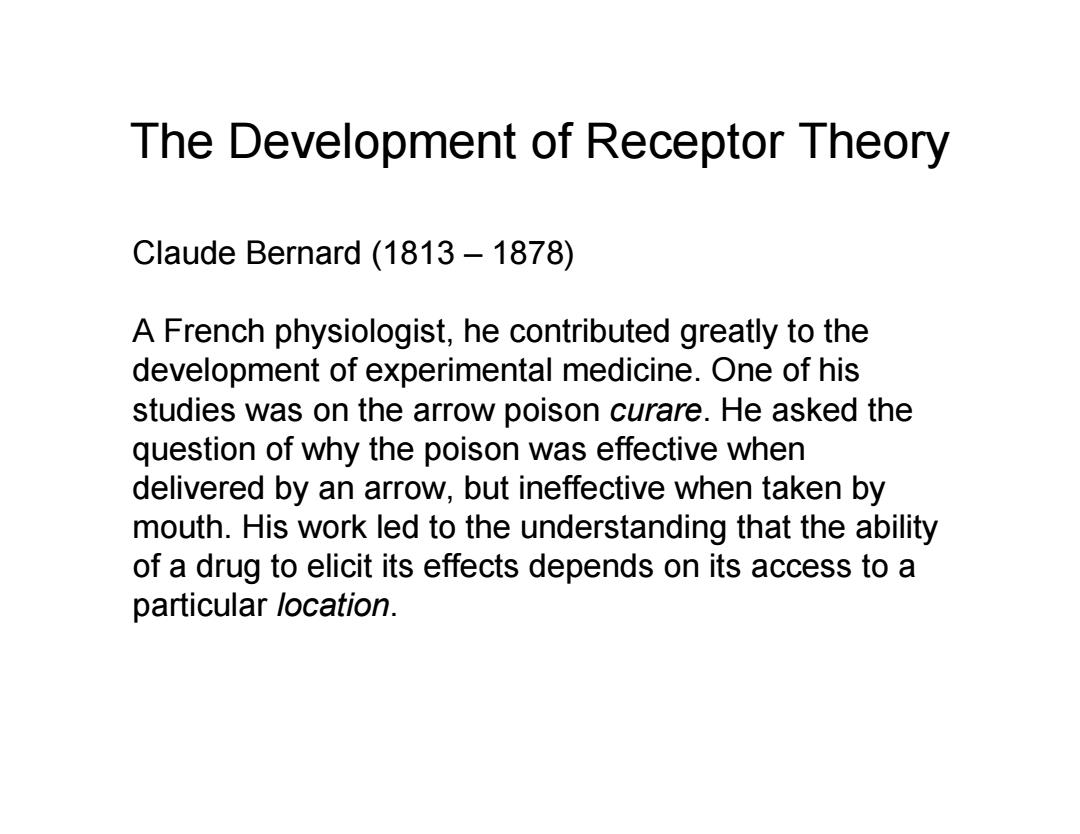
Chapter 3: Receptor Theory and Pharmacodynamics (1) Prof.R.D.Ye 2012-09-17
Chapter 3: Receptor Theory and Pharmacodynamics (1) Prof. R.D. Ye 2012-09-17

Pharmacodynamics is the study of the detailed mechanism of action by which drugs produce their pharmacological effects.This study starts at the binding of a drug to its target receptor or enzyme,continues through a signal transduction pathway by which the receptor activates second messenger molecules,and ends with the ultimate description of intracellular processes altered by the impact of the drug. There is also a quantitative aspect to pharmacodynamics in characterizing the dose-response curve,which is the relationship between drug dose and the magnitude of the pharmacological effect.Pharmacodynamics provides a scientific basis for the selection and use of drugs to counteract specific pathophysiologic changes due to disease or trauma
Pharmacodynamics is the study of the detailed mechanism of action by which drugs produce their pharmacological effects. This study starts at the binding of a drug to its target receptor or enzyme, continues through a signal transduction pathway by which the receptor activates second messenger molecules, and ends with the ultimate description of intracellular processes altered by the impact of the drug. There is also a quantitative aspect to pharmacodynamics in characterizing the dose-response curve, which is the relationship between drug dose and the magnitude of the pharmacological effect. Pharmacodynamics provides a scientific basis for the selection and use of drugs to counteract specific pathophysiologic changes due to disease or trauma

Study objectives Definition and characteristics of receptors Classification of Receptors Receptor activation and signal transduction ·Drug actions Classification of agonists and antagonists Dose-response relationship
• Definition and characteristics of receptors • Classification of Receptors • Receptor activation and signal transduction • Drug actions • Classification of agonists and antagonists • Dose-response relationship Study objectives

The Development of Receptor Theory Claude Bernard(1813-1878) A French physiologist,he contributed greatly to the development of experimental medicine.One of his studies was on the arrow poison curare.He asked the question of why the poison was effective when delivered by an arrow,but ineffective when taken by mouth.His work led to the understanding that the ability of a drug to elicit its effects depends on its access to a particular location
The Development of Receptor Theory Claude Bernard (1813 – 1878) A French physiologist, he contributed greatly to the development of experimental medicine. One of his studies was on the arrow poison curare. He asked the question of why the poison was effective when delivered by an arrow, but ineffective when taken by mouth. His work led to the understanding that the ability of a drug to elicit its effects depends on its access to a particular location

The Development of Receptor Theory G.G.Stokes,a physicist at Cambridge,observed in 1864 spectral changes occurred when oxygen was removed from blood or subsequently reintroduced to blood.This finding demonstrated molecular interactions between two substances,implicating a complex between oxygen and hemoglobin. As will be discussed later,one hemoglobin molecule can bind 4 oxygen molecules,and there is a positive cooperativity of binding of molecular oxygen to hemoglobin
The Development of Receptor Theory G.G. Stokes, a physicist at Cambridge, observed in 1864 spectral changes occurred when oxygen was removed from blood or subsequently reintroduced to blood. This finding demonstrated molecular interactions between two substances, implicating a complex between oxygen and hemoglobin. As will be discussed later, one hemoglobin molecule can bind 4 oxygen molecules, and there is a positive cooperativity of binding of molecular oxygen to hemoglobin